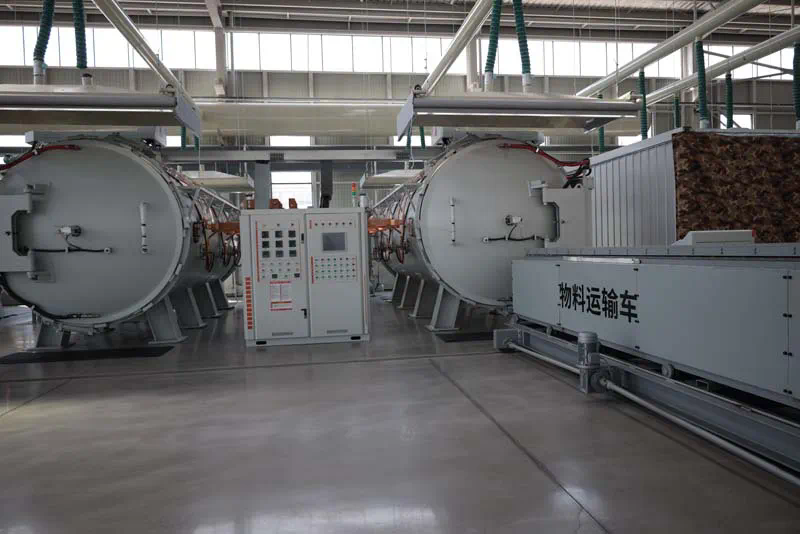Why Silicon Carbide is Crucial for High-Performance Semiconductors
Silicon carbide (SiC) has emerged as a cornerstone material for high-performance semiconductors, offering significant advantages over traditional silicon (Si) in various applications. As the demand for more efficient and powerful electronic devices continues to grow, understanding the importance of SiC in semiconductor technology is crucial. This article delves into the properties, benefits, applications, and future prospects of silicon carbide in the semiconductor industry.
Understanding Silicon Carbide
Silicon carbide is a compound semiconductor composed of silicon and carbon. Its unique crystalline structure gives it several remarkable properties, making it a suitable candidate for high-performance applications. SiC has a wide bandgap of about 3.26 eV, compared to silicon’s 1.12 eV, which translates to superior performance in high-temperature, high-voltage, and high-frequency environments.
Properties of Silicon Carbide
The exceptional properties of SiC can be categorized into thermal, electrical, and mechanical aspects:
- High Thermal Conductivity: SiC exhibits excellent thermal conductivity, allowing for efficient heat dissipation. This property is critical in power electronics where overheating can lead to component failure.
- Wide Bandgap: The wide bandgap of SiC enables devices to operate at higher voltages and temperatures, resulting in improved energy efficiency and reduced power losses.
- High Breakdown Electric Field: SiC can withstand much higher electric fields than silicon, making it ideal for high-voltage applications.
- Mechanical Strength: SiC possesses high hardness and tensile strength, contributing to its durability and reliability in demanding environments.
Advantages of Silicon Carbide in Semiconductors
The transition from silicon to silicon carbide in semiconductor devices is driven by several key advantages:
Enhanced Efficiency
One of the most significant benefits of SiC is its ability to improve the efficiency of power conversion systems. Devices made from SiC can achieve lower switching losses and higher efficiencies, particularly in power converters and inverters used in renewable energy systems and electric vehicles.
Higher Temperature Performance
Silicon carbide can operate at elevated temperatures without significant degradation in performance. This characteristic is essential for applications in automotive and aerospace industries, where components are often exposed to extreme conditions. SiC-based devices can function reliably in temperatures exceeding 200 degrees Celsius, far beyond the limits of traditional silicon devices.
Compact Design
The superior efficiency and high voltage capabilities of SiC allow for smaller and lighter designs in electronic systems. This miniaturization is particularly valuable in consumer electronics and electric vehicles, where space and weight optimization are critical.

Applications of Silicon Carbide
Silicon carbide is finding its way into a multitude of applications across various industries:
Power Electronics
SiC is revolutionizing power electronic devices used in energy conversion systems, including power supplies, motor drives, and renewable energy systems. The increased efficiency and reduced thermal management requirements of SiC devices lead to lower operational costs and enhanced system reliability.
Automotive Industry
With the rise of electric vehicles (EVs), the automotive industry is increasingly adopting silicon carbide technology. SiC-based inverters and converters enable faster charging times, improved range, and better overall performance of EVs. The ability to operate at higher temperatures and voltages contributes to the longevity and reliability of automotive systems.
Aerospace and Defense
In aerospace and defense applications, SiC devices are utilized for their ability to withstand harsh environments. They are critical in radar systems, satellite communication, and power management systems, where reliability and performance are paramount.

Telecommunications
As telecommunications infrastructure evolves, silicon carbide is playing a vital role in 5G technology. SiC amplifiers and transistors provide the high frequency and efficiency required for advanced communication systems, enabling faster data transmission and improved connectivity.
Challenges and Limitations
Despite its numerous advantages, the adoption of silicon carbide is not without challenges:
Manufacturing Complexity
The production of SiC wafers is more complex and costly compared to traditional silicon wafers. The growth of high-quality SiC crystals requires advanced techniques such as sublimation and chemical vapor deposition, which can be capital-intensive.
Material Defects
Defects in SiC crystals can affect the performance of devices. Research and development efforts are ongoing silicon carbide semiconductor to minimize defects and improve the overall quality of SiC materials, but this remains a challenge that manufacturers must overcome.
Future Prospects of Silicon Carbide
The future of silicon carbide in the semiconductor industry looks promising as technology advances and the demand for efficient power solutions continues to rise. Key trends include:
Increased Investment
Major semiconductor manufacturers are investing heavily in SiC technology, recognizing its potential to transform various markets. As production scales increase, costs are expected to decrease, making SiC technology more accessible to a broader range of applications.
Research and Innovation
Ongoing research is focused on improving SiC material quality, enhancing manufacturing processes, and developing new applications. Innovations in device architecture and packaging will further unlock the potential of silicon carbide technology.
Integration with Other Technologies
Silicon carbide is likely to play a key role in the integration of different technologies, such as hybrid systems that combine SiC with other semiconductor materials. This approach can lead to optimized performance across various applications, from renewable energy systems to advanced automotive solutions.
Conclusion
In conclusion, silicon carbide is crucial for high-performance semiconductors, offering a range of advantages that significantly enhance the efficiency, reliability, and performance of electronic devices. As industries continue to evolve and seek more effective solutions, the role of SiC is expected to expand, paving the way for technological advancements in power electronics, automotive, telecommunications, and beyond. With ongoing research and development, silicon carbide stands poised to become an integral part of the semiconductor landscape, driving innovation and shaping the future of electronics.
https://icreekside.com/

